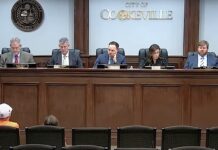In April, Uber settled two large class-action lawsuits in California and Massachusetts. Uber is a high-profile company on the leading edge of the new “shared economy.” By providing an app that would-be passengers use to find rides with drivers who own their own vehicles, Uber is not only transforming the landscape of paid transportation, but also challenging long-standing legal precedents in employment law regarding the status of its drivers.
Specifically, the primary question in both of these lawsuits was whether Uber drivers were employees or independent contractors.
Per the settlement terms, the plaintiff classes will receive at least $84 million and can receive up to an additional $16 million if Uber goes public and certain valuation measures are met. Interestingly, the settlement included a provision the drivers in these two states would remain independent contractors, not employees. That provision did not buy Uber much peace, however, as a similar class action lawsuit was filed in Illinois in May. In that case, the complaint alleges drivers are employees and says Uber owes the plaintiffs for unpaid overtime, pay for time not worked, reimbursement for expenses, and for the loss of gratuities which the lead plaintiff says Uber “stole from her.”
DÉJÀ VU ALL OVER AGAIN?
If the fighting over driver classification sounds familiar, it should. During much of the last decade, Federal Express (FedEx) fought many class action lawsuits over their treatment of drivers as independent contractors.
FedEx operated for years under a business model that classified its drivers as independent contractors. The drivers used their own equipment, as they were required to purchase the truck if they wished to drive for FedEx. Drivers also paid for fuel and other expenses. Use of one’s own equipment has long been one of the hallmarks of an independent contractor. On the other hand, FedEx required adherence to a great many standards. The drivers wore FedEx uniforms. They handled packages. The trucks had to meet FedEx requirements, including bearing the company logo.
Eventually, FedEx changed its business model and in 2011 hired the FedEx Ground drivers as employees. That did not end the pending lawsuits or their costs. For example, in June 2015, FedEx settled a decade-long class- action case in California by agreeing to create a $228 million fund for payment of the misclassified drivers.
Now, Uber is the new favorite target for driver misclassification lawsuits.
HOW DO UBER DRIVERS COMPARE TO FEDEX DRIVERS?
Both employers required drivers to own their vehicle. Of course, the Uber driver’s vehicle is typically a passenger vehicle and does not bear a company logo. Uber must approve the vehicle, and drivers are required to meet safety standards. FedEx also approved vehicles and had safety standards. Uber drivers are not required to wear uniforms. They do not track packages via a company system, but do of course learn of driving opportunities and track and report rides via Uber’s software.
Uber recently published a guideline for its drivers regarding factors that can lead to “deactivation,” or removal from its list of drivers. According to the guidelines, poor quality can lead to deactivation. Quality is measured in various ways, including a “star rating” based on surveys from drivers and riders, cancellation rate (the percentage of times the driver accepts an assignment and cancels) and acceptance rate (the percentage of driving opportunities the driver accepts).
Uber will also deactivate a driver for fraud, safety violations, violation of drug and alcohol policy, legal compliance failures, violating the ban on firearms, failure to provide accurate personal information, unacceptable activities (such as accepting illegal hails), or engaging in discrimination by refusing to serve or mistreating riders on the basis of race, sex, religion, etc. (Is it just me or is this list beginning to sound like an employee handbook?)
WILL OLD INDEPENDENT CONTRACTOR ANALYSIS BE MADE NEW AGAIN?
The new economy has created new models for companies and individuals who provide services for them. Uber is a prime example.
Under the current legal analysis for independent contractors (including a list of factors used by the IRS for tax purposes), it appears likely drivers would be found to be employees. They must adhere to Uber standards during the performance of their duties. If they do not do so, including accepting a high enough percentage of driving opportunities, Uber will deactivate them.
One may argue that while the above is true, the drivers supply their own vehicles, are free to accept or reject assignments, and can certainly pursue other opportunities, business and personal, while working via Uber. All of these things are true, and make the analysis a closer case than many.
With all due respect to the IRS factors and other “factor”-based analysis of the issue, there has always been an extent to which the determination of independent contractor status has been something of a “know it when I see it” exercise. The primary consideration in the “know it when I see it” judgment is whether it appears the person in question is genuinely in business for himself or herself, or is dependent on the organization in question for work. While it may be a closer question with Uber for a variety of reasons, the bottom line reality is that, absent Uber, the drivers are not in the driving business at all.
Assuming that the “old” and existing independent contractor analysis leads to classification of the drivers as employees, that raises the question: Will Congress or the courts change the law in some way that accommodates this and similar work models? The answer will impact a great many people. Uber says over 450,000 drivers use its app each month in the U.S. alone. Uber is just one company. It has competition. And there are many other employers and individuals who are engaging in, and desire to engage in, such non-traditional forms of work.
If there is a change in the law, who would accomplish it? What would it look like? The courts are unlikely to create wholesale changes in the independent contractor analysis. That leaves legislation as the more likely route. Given the rise of new business models such as Uber, Congress may see a need to act. But in which direction? Congress could create new laws that make it harder to treat someone as an independent contractor. Or, Congress could enact rules creating new standards that are easier to define and understand and which, if met, would clearly permit independent contractor classification.
It’s too early to tell whether Uber and other employers with “shared economy” business models will become prevalent or powerful enough that new rules are forged to assist them, or at least lend clarification to the analysis. Meanwhile, it seems lawsuits on this topic will continue unabated.
“UBERIFICATION” MAKES STRANGE BEDFELLOWS: UNIONS AND UBER
An unusual aspect of Uber’s resolution of the lawsuits was its agreement to help create and fund a drivers association in both states. In May, Uber recognized an Independent Drivers Guild in New York City that was created via the International Association of Machinists. Uber’s cooperation is apparently driven by a desire to have a more formalized means to communicate with its many drivers, and to address and resolve their concerns.
This model will not work if drivers are employees. Under the National Labor Relations Act, an employer may not fund a union or its activities. Where that takes place, the organization is considered unlawful.
As long as drivers are considered independent contractors, however, the new arrangements between Uber and the unions may operate lawfully. This is because the National Labor Relations Act only covers employees and does not apply to independent contractors. If drivers are independent contractors, Uber can flatly refuse to deal with any union that wishes to represent them. On the other hand, and for the same reason, Uber is also free to enter contractually defined relationships with unions if it desires, and can even contribute funds to help cover the union’s activities in communicating with and providing services to Uber drivers.
WILL THE LAW KEEP UP?
The law often lags society and technology. The courts rule based on precedent, and legislatures must debate change in a politically charged environment. Meanwhile, businesses like Uber find creative new ways to provide services and attract customers. It will be interesting to see whether, and when, the law adjusts to new working arrangements such as Uber’s in the “shared economy” model.








